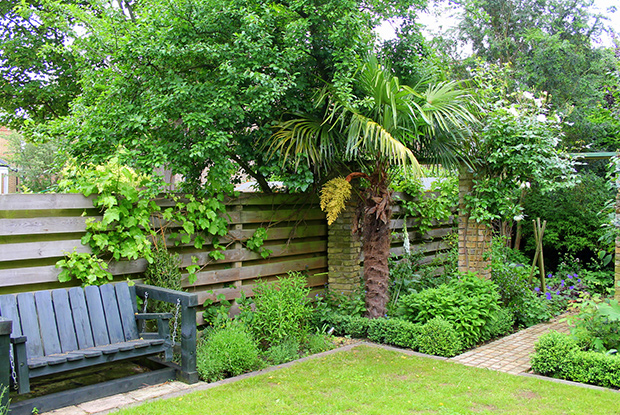
Small garden design
Small garden design issues
Designing small gardens can seem like a rather large and daunting task. What shall I put where? How will anyone see it/them? What if there’s no room for playing, relaxing, eating? With an apparent lack of space, you can immediately feel limited; not only by boundaries and shape but also by other issues such as tricky lighting, awkward access and tidying or maintenance challenges.
In today’s Gingko blog we’re going to address some of these key issues in designing small gardens and help you make the best use of space in your garden. Are you ready for it? It’s all about planning. Yes, here we go again! But if you get the small garden design plan right from the start, you can have a garden that thrives and blossoms for years to come, without hours and hours of hard work.
Issue # 1: light
The problem: Designing small gardens to be seen and admired must first take into account a key external factor: light. Many small gardens, particularly urban ones, have the issue of being partially or even completely shrouded in shade, either from another building or from the dwelling’s own architecture. This isn’t necessarily a problem, however to really highlight your most favourite plants and flowers, you’re going to have to think about light more closely and plan your small garden design to make the best use of it.
The solution: Take a good look at the garden. What’s the first area you notice in broad daylight? Which area(s) get natural light for the longest period of time? This will most likely be your showcase area, and for the less light-abundant areas, you will need to choose plants and shrubs that can thrive and bloom in shady areas. Another consideration may be electric lighting. If you’re going to use the garden more for summer evenings and firework nights, there are a wide range of lighting options to choose from.
Issue #2: Access
The problem: Access to a small garden may again be limited, especially on an urban garden site. Designing small gardens to have a lawn, water feature or play area may be blighted by a lack of hard landscaping or side access paths.
The solution: It’s best therefore to think about what would really be sustainable and convenient in your garden. Having some hard landscaping installed as part of the plan may be the answer, however consider that the strong, gnarly roots of large tress and shrubs nearby may after time interfere with those structures from underneath.
Issue #3: Maintenance
The problem: With less space available, it can be tempting to fill the garden with as many fun and attractive features as possible. However…then comes the painful (and it is painful!) issue of maintenance. If your small garden design is treacherous to get around, you may be inadvertently putting the kibosh on your maintenance chores and could see the design flounder after only a few months. Have a think about these two things first: convenient lifestyle/dining area and easy maintenance access.
The solution: It helps to start with a little honesty. Realistically, how much time can you put aside, and how regularly, for garden maintenance? Whether it’s a little or a lot, you’ll want to make a plan that incorporates an expected amount of maintenance when designing small gardens. Along with access plans above, you’ll need to choose plants, shrubs and features (including a dining or lounging area) that can be easily and happily maintained throughout the year according to your schedule.
Contrary to these issues, designing a small garden can actually be a lot of fun, and many people will vouch for the freedom in having less to think about when there are just a few less possibilities. We recommend a firm eye on the practical when designing small gardens, and the results will come.
Gingko Gardens provides small garden design and small garden maintenance for a range of homes and businesses.
If you would like help designing a small or large garden or need support with your current design, get in touch with us now.






















